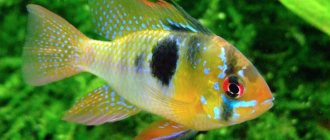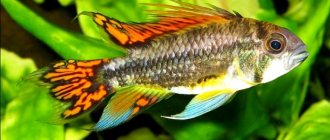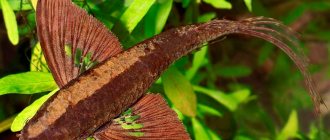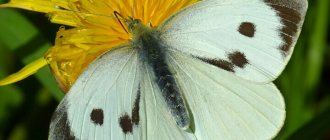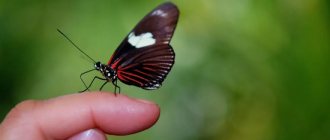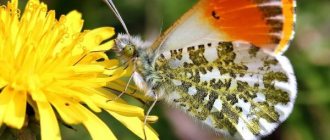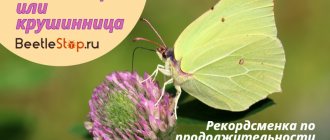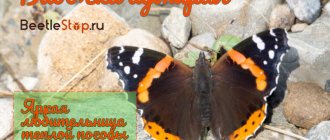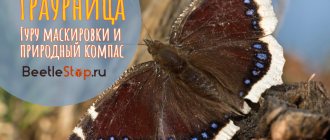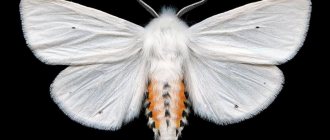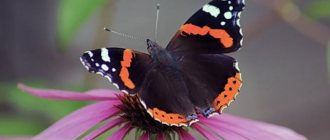Maintenance and care of the Apistogramma cockatoo
Apistogramma cockatoos do not need a large aquarium volume; 60 liters is enough for a couple of individuals.
Like all cichlids, these fish need clean water, so filtration and aeration systems must be good. Cockatoos, especially males, love shelters and can stay in them for a very long time, sometimes emerging only while feeding. This is normal behavior and should not cause concern. If the aquarium is large enough, you can have a group of Apistogramma cockatoos: a male and several females. These fish exhibit relatively mild intraspecific aggression between males. As well as territorial aggression towards other fish during the spawning period. Apistogramma cockatoos are easy fish to keep; even a beginner can handle them; the main thing is to stock them when the biobalance is established in the aquarium and the water parameters are stable. Ammonia and nitrites should be at zero, nitrates no more than 25, good filtration, appropriate temperature conditions, weekly water changes - that's all these fish need!
Cockatoos love “dense aquariums” - overgrown with plants, with dim light. It is advisable to create many shelters that the fish will perceive as “houses” and protect them from other inhabitants.
Remember that all apistograms are sdychotics! They're dying like flies. And this is not just an empty conclusion. And the conclusions are based on general practice, including the practice of FanFishka. On our forum, at one time the moderator was Victoria Kobzeva, or rather her husband Ian. Respect to you guys! Contained all sorts of rare, expensive and not very apist. So, sooner or later, they all either became bloated, or hunched over, or were covered in sores, packed their bags and went to Neptune - to the land of the eternal bloodworm.
Hence the conclusions, friends! Firstly, we do not recommend getting an Apistogram for green beginners. Train on guppies Secondly, if you are already seduced by the beauty of these fish, then you need to create ideal conditions for them. The aquarium should not have excessive concentrations of nitrogen compounds and phosphates, and there should be good filtration and aeration. The water temperature should be kept a little higher than the average; our recommended range is 27-30 degrees Celsius. This temperature will inhibit pathogenic flora and at the same time speed up the fish’s metabolism, the immune system will work better.
We also recommend that when making changes, add a preventive dose of pharmaceutical iodinol, or better yet, Tetra Vital, which, in addition to iodine, contains vitamins, minerals and trace elements; it will definitely be useful not only for apistogramma, but for the entire aquarium as a whole.
You should also pay attention to the diet of apistograms. Our recommendation is to keep them on dry military rations and not overfeed
Under no circumstances should you feed it with live food or any dry daphnia or gamarus. To prevent them from swelling, swelling and hooking, take proven branded food, pay attention to expiration dates and storage conditions. Our recommendation, and I think you will agree with it, is Tetrovsky food, which has been tested by more than one generation of aquarists. For example, food from the Tetra Ruby or Tetra Color series are perfect. They contain carotenoids that will enhance the color of colorful apistograms.
Well, the fish are omnivorous and absolutely unpretentious when it comes to food. Cockatoos are omnivores and willingly eat any food, both dry and live. They really don’t like to swim to the surface of the water for food, preferring to take food in the water column, or even collect it from the bottom.
Feeding any aquarium fish should be correct: balanced, varied. This fundamental rule is the key to the successful keeping of any fish, be it guppies or astronotuses. The article “How and how much to feed aquarium fish” talks about this in detail; it outlines the basic principles of the diet and feeding regime of the fish.
In this article, we note the most important thing - feeding fish should not be monotonous; the diet should include both dry food and live food. In addition, you need to take into account the gastronomic preferences of a particular fish and, depending on this, include in its diet food either with the highest protein content or, conversely, with plant ingredients.
It should be noted that when purchasing any dry food, you should pay attention to the date of its manufacture and shelf life, try not to buy food in bulk, and also store food in a closed state - this will help avoid the development of pathogenic flora in it
Nutrition
In nature, they feed by sifting sand with their mouths in search of various organisms. In a home aquarium, sand is also key to the feeding process. Feed drowning dry food with plant additives, such as flakes, granules. If possible, serve frozen brine shrimp, daphnia, and bloodworm pieces. The food particles should not be large; the fish is not able to bite off, but swallows it whole.
Our product Aqvium natural dry food for small and medium fish from clean lakes of Siberia and Northern Crimea in environmentally friendly biodegradable packaging.
Find out more
Content
Since the chromis butterfly is small in size, 20-25 liters will be enough for one individual. It is recommended to arrange a familiar habitat for them - a stylized tropical forest. To achieve optimal conditions, you can add alder cones, peat or almond leaves to the water. They will help increase the content of humins in the water, to which fish are so accustomed in nature.
As for the soil, for a tropical aquarium it is better to purchase a special substrate that already contains tree branches and roots. They will provide shelter where the fish can rest and the fry can hide from the adults. Also, a few flat stones will not hurt, which will provide a suitable place for laying eggs.
Butterfly cichlids are not demanding of light, but in order to highlight their luxurious color, it is recommended to acquire daylight lighting, in which white and blue tones will predominate.
Water parameters should be created close to natural ones. Apistogramma ramirezi prefers very warm water, between 27-30 degrees Celsius. Acidity is maintained from 6 to 7.5 pH, and hardness from 10 to 15 dH.
It is extremely important to comply with the specified water parameters. Any deviation from them threatens weakening of the immune system and, as a result, the occurrence of all kinds of diseases.
Fish prefer a clean environment saturated with oxygen, and therefore a filter and compressor are required. Every week you need to replace a quarter of the water with fresh water.
The fish are not picky about their diet. They eat granulated dry and live food with appetite. The main thing is to choose a high-quality composition that has been treated against various infections.
Many aquarists prepare their own food. Minced sea fish, shellfish, crustaceans, as well as vegetables and fruits are suitable. It is frozen, divided into small pieces and thrown into the aquarium
It is important to provide the fish with a balanced diet, because monotony will lead to obesity and vitamin deficiency, and can also negatively affect reproductive function
From the editor: Calamus herbaceous
Apistogramma Ramirezi differs from other cichlids in its peaceful behavior.
Care
Mandatory butterfly care includes:
- weekly water changes;
- water quality testing;
- soil siphon;
- preparing a varied diet;
- timely detection and treatment of diseases;
- maintaining stable water parameters.
Combine soil cleansing with weekly water changes. Test your ammonia levels with water tests once a week.
Feeding
Butterflies tend to overeat, so feed the fish as much food as they eat in 5 minutes. After feeding, remove uneaten food particles. The omnivorous nature of fish allows them to have a varied diet.
Suitable frozen and live foods:
- bloodworm;
- daphnia;
- coretra;
- Cyclops.
Diversify your diet with plant foods:
- dandelions;
- nettle;
- cabbage;
- cucumbers;
- branded food.
Use dry food as a supplement to your diet.
Reproduction
Breeding Apistogramma in aquarium conditions is accompanied by the correct selection of pairs and stimulation of spawning. At this time, apistograms become quite aggressive, as they protect their offspring from strangers. For one pair of fish you need a container of at least 15 liters with a temperature of 27-28°C with soft acidic water.
Apistogramma ramirezi spawn starting from 5 months in an aquarium with a fine-grained substrate, flat stones or caves surrounded by bushes of plants. Apistogramma Ramirez has no parental instincts; they are capable of destroying their numerous offspring by eating them. Experienced aquarists recommend planting a couple of Ramires' apistograms in a separate 15-liter container next to the swordtail, which will stimulate the Ramires to take better care of the eggs. The female Apistogramma ramirez turns yellow during spawning and lays up to 200 eggs on a smooth surface. For the male Apistogramma, you need to install a shelter. The juveniles are fed brine shrimp, live dust and rotifers.
Ramirezi gold
Electric blues spawn when they reach 3 cm in length, digging holes and laying eggs in them. Weak parental instincts of electric blue can cause the death of eggs, but good parents hatch tender larvae.
During spawning, female cockatoos turn yellow, lay up to 80 eggs and hide them in a chosen shelter. The male cockatoo guards the territory with its offspring for 3 days.
Bolivian Apistogramma matures by 12 months; it is better to place the breeders in a 60-liter species aquarium. The young butterfly is also prone to cannibalism, so older individuals are chosen for the pair.
Breeding of the Apistogramma Agassica species occurs by the age of six months in a general or separate aquarium. For the spawning substrate, you can take a flower pot or coconut shell. The female lays up to 300 eggs and aggressively protects them from other fish.
Chromis blue-green - Chromis caerulea
photo can be enlarged
Blue-green chromis is a small and very bright fish that looks perfect in reef areas. These fish are territorial, so they are aggressive towards members of their own species.
The growth of fish can be very different from 4 to 30 cm. the body is elongated and flattened at the sides. Their head is elongated, their eyes are large with a bluish rim, their mouth is small, and their nostrils are small, 1 or 2 on each side. The longest fin is considered to be the dorsal one. The body is covered with large scales with 1 black dot or stripe at the ends.
Chromis have a variety of colors, most often they are found in bright colors, which can be either bright blue or black, but most chromis are blue-green. It is because of its color that Chromis blue-green got its name. The Pamarcentra family is mainly found in fresh water, but there are cases when they were found in brackish water. Chromis are considered omnivores; they can feed on both vegetation and smaller fish. These fish get along well with almost any type of fish.
Chromis blue-green is widespread from the Red Sea to Madagascar, almost throughout Oceania, as well as on the Fiji Islands.
Chromis blue-green matures for fertilization at the age of 13-17 months. The female lays her eggs on flat, slightly inclined stones. During spawning, it is better not to touch the fish, they become more aggressive. The incubation period lasts up to 3 days at a temperature of 28-30°C. Parents take care of the eggs, guarding them in turns. After the fry hatch, they transfer them to the pits. Chromis are considered caring parents when the fry already begin to swim and accompany them while eating. At first, they feed on “living dust”, after which they switch to a more nutritious diet.
Apistogramma video review +
Subscribe to our YouTube channel so you don't miss anything
Peaceful cichlidsCichlidsPopular fish
Category: Aquarium articles / Aquarium fish | Views: 12,398 | Date: 02/07/2019, 20:01 |
We also recommend reading:
- — Seminar Aqua Logo “Aquarium for Beginners” Moscow - don’t miss it!
- — Reproduction and breeding of cockerels
- — Breeding and reproduction of zebrafish
- — Reproduction and breeding of swordtails
- — Nano aquarium video review
What do apistograms eat?
In nature, fish eat a variety of small organisms that they can find in the soil and plants. Aquarium fish should be fed frozen bloodworms, brine shrimp, tubifex, and coretra. They eat flakes and granules reluctantly, and sometimes even refuse them altogether. Please note that the fish is calm, make sure that it has time to eat, especially if there are active fish such as zebrafish in the aquarium.
Young animals with not yet formed spots on the sides
What causes apistogramma butterflies?
These are quite delicate and sickly fish. Adaptation to a new place is quite slow and difficult for them. Under no circumstances should you frequently move them from place to place.
Butterfly chromis are very dependent on water temperature. Reducing it to 26 degrees or less leads to lethargy and weakness of the fish. In this case, they rise to the surface, gasp for air, and the body swells under the gills.
The most common diseases:
- Hexamitosis and ichthyophirius. Their cause is microscopic parasites.
- Lymphocystosis or cellular hypertrophy. Their cause is viruses. Gray nodules and black spots appear on the body of the fish. The disease has no cure.
- Tuberculosis and dropsy. The main symptom is bulging eyes and ruffled scales.
- Inflammation of the gastrointestinal tract, caused by overeating.
- Stress.
Accurately identified diseases are treated medicinally (adding special medications) or surgically (removing the affected parts). Diseases caused by overeating are treated by fasting for several days. In most cases, feeling unwell for no apparent reason can be corrected by simply increasing the temperature of the water in the aquarium.
In conclusion, it remains to be said that the Apistogramma butterfly is perhaps the best cichlid for those who decide to take up them for the first time. It is small, very bright and showy, has a peaceful character and interesting behavior. There are, of course, some difficulties in its maintenance and reproduction, but they are quite surmountable. The “fly in the ointment” is the fact that many weakened fish are now sold that die in the first year of life.
Video: behavior of apistogramma butterfly in an aquarium:
Diseases
Instability or inconsistency of parameters lead to the development of diseases in butterfly fish:
- ichthyophthiriasis (semolina);
- hexamitosis;
- tuberculosis;
- lymphocystosis;
- poisoning with ammonia, chlorine;
- iridovirus.
Diseases are treated by improving conditions and drugs from the pet store. The exception is fish tuberculosis, which can rarely be cured with antibiotics and a solution of vitamin B6 (a drop per 20 liters of water). Apistogrammas are susceptible to obesity and inflammation of the gastrointestinal tract due to overeating.
Confusion with names
Before moving on to the content of these cichlids, we must definitely talk about the confusion in their names and taxonomy.
Scientists have debated many times about determining the correct scientific designation, and also changed the classification of small South American cichlids. The current name in Latin today is Mikrogeophagus ramirezi.
The most common common name is Apistogramma butterfly. You may also encounter these fish in literature under the name
- Apistogramma ramirezi;
- Papiliochromis ramirezi;
- apistograms of ramiresi or ramirez;
- microgeophagus ramiresi;
- butterfly apistograms;
- Venezuelan butterfly;
- chromis butterflies.
Apistogramma of normal color.
Habitat
South America - this species inhabits fairly large areas, covering the northeastern part of Bolivia, as well as the territory of the Brazilian state of Mato Grosso, and is considered endemic to the upper Rio Madeira River basin in Bolivia and Brazil.
Bolivian butterfly (M. altispinosa) is distributed in Bolivia and Brazil.
There are records of occurrence in the Rio Mamora and Rio Guapora in Bolivia and Brazil, as well as in the upper Rio Orton basin (tributaries of the Tahuamanu and Manuripi).
Bolivian butterfly (M. altispinosa) habitat Tahuamanu River.
Inhabits tributaries, oxbow lakes, creeks and lakes with a substrate of sand or clay. Lives in shallow water areas. Prefers places with weak currents, rich vegetation and lots of snags.
The Upper Madeira is impressively diverse, with over 400 species of freshwater fish recorded to date.
Compatibility with other fish
The butterfly can be kept in a common aquarium, with peaceful and medium-sized fish. By itself, it gets along with any fish, but larger ones can offend it.
Neighbors can be viviparous animals: guppies, swordtails, platies and mollies, as well as various characins: neons, red neons, rhodostomus, rasboras, erythrozonus.
As for the content of Ramirezi's apistograms with shrimp, this is, although small, a cichlid. And if she doesn’t touch a large shrimp, then she will perceive the small thing as food.
The Ramirez butterfly can live either alone or in pairs. If you are going to keep several pairs, then the aquarium should be spacious and have shelters, since the fish, like all cichlids, are territorial.
By the way, if you purchased a pair, it does not mean at all that they will spawn. As a rule, a dozen juveniles are bought for breeding, allowing them to choose their own partner.
Chromis green
photo can be enlarged
An amazing fish from the Pomacentridae family, Chromis viridis, is also known as damselfish and green chromis. This inhabitant of lagoons and reefs of the Indo-Pacific and the Red Sea is notable for its gregarious lifestyle. A school of chromis hides in the branches of corals.
In nature, Chromis viridis is in constant search of food, so its favorite treat is plankton. In an aquarium, adapted fish will accept most frozen and dry foods. Regular feeding will allow you to keep a school of chromis even in a small aquarium.
To successfully keep damselfish fish, you need to have a fairly large reef aquarium with shelter. Swallow fish can be placed in a school in an aquarium next to friendly small fish. And in insufficient quantities, proximity to fish like the fiery centropygus can cause constant clashes.
If there is a lack of feeding, chromis will compete with each other, and will also be aggressive towards other fish in an insufficiently spacious area. And there is no particular point in planting them in a small aquarium, even despite their bright, shiny color, they look less advantageous individually.
In nature they grow up to 8-9 centimeters. With a minimum aquarium volume of 150 liters and feeding several times a day, maintenance does not cause any particular problems.
Selected species
Electric blue
Electric Blue
The Electric Blue species was bred from Ramirez Apistogramma and looks great in an aquarium with a dark background. The size of the electric blue reaches up to 6 cm, the body color is neon blue, and the front part is orange-red. The brightness of the electric blue's color depends on the quality of the conditions under which they are kept and proper lighting.
Ramirezi gold
Apistogramma Ramirezi Gold is a colorful dwarf cichlid with original colors. The golden ramirezi is a bright lemon color with blue spots on the sides and tail. The male gold has an orange dorsal fin with high rays turning into a red tint. The golden female has a solid golden body. Ramirezi Golds have beautiful black eyes surrounded by a ruby ring.
Ramirezi blue neon
The Ramirezi blue neon species is also an artificially bred color form suitable only for experienced aquarists. Delicate neon lives for about 2 years in good conditions, it is kept in pairs or in a group where the number of females predominates.
From the editor: Flag swordtail
Veiled
Veiled
The veil butterfly has a chic appearance thanks to its long tail and rainbow colors. The Apistogramma butterfly is yellow-olive with blue and dark spots. The tail rays are outlined in purple and the unpaired fins are outlined in red. The male is larger than the female, reaches up to 8 cm and is brighter. The veil butterfly is a rather peaceful and unpretentious aquarium fish.
There are also less popular, but equally beautiful species, such as pandurini apistogramma, widget apistogramma, McMaster apistogramma, ramirezi balloon and others.
Chromis yellow
photo can be enlarged
In aquarium culture, the most common are the yellow morphs of the species Labidochromis caeruleus, which are called Labidochromis yellow. The first specimens of this species found were bluish in color (“caeruleus” (Latin) – blue). Currently, there are about 10 color variations of this species - from almost white to blue and yellow.
Labidochromis belong to the Mbuna group of Malawian cichlids - mobile inhabitants of rocky placers. These fish are very popular not only because of their bright colors, but also because they have a relatively peaceful disposition compared to other Malawian cichlids. In good conditions, the lifespan is 6 - 10 years.
Endemic to Lake Malawi. Labidochromis yellow lives in the waters of the western coast of the lake. Other morphs of this species are also found near the east coast. They occupy rocky areas at depths of up to 20-30 meters, where thickets of Vallisneria are found. They feed mainly on rock-dwelling crustaceans and mollusks, as well as insects and small fish.
Fish in nature reach 8 cm in length, in an aquarium they grow up to 10 cm. The body is strong, elongated, bright yellow in color. A black stripe runs along the upper edge of the dorsal fin and along the lower edge of the anal fin, which develops in adult fish and is brightest in males.
In nature, the species is mainly carnivorous, but in the aquarium it accepts all types of live, frozen and dry food. Plant and animal feed components should occupy approximately equal shares in the diet. To improve coloration, it is recommended to introduce feed rich in carotene.
The minimum size of an aquarium is about 120 liters, although tanks of 200 liters or more are the best option. It is necessary to ensure a strong current, high-quality filtration and regular water changes. Suitable soil made of fine sand or coral chips. In the aquarium, you need to create a rocky terrain with many caves and crevices where persecuted individuals can hide. In some cases, keeping with plants is possible, but it is necessary to choose hard-leaved species with a strong root system.
It is considered one of the most peaceful species of Malawian cichlids. It is possible to keep them in a pair or in a group of one male and several females. They show aggressiveness towards species similar in color and body shape. Other non-warlike species of cichlids of the Mbuna group, aulonocara, some lamprologus, and synodontis catfishes are suitable as neighbors.
Males are slightly larger than females, during spawning they are more brightly colored, their scales acquire a bluish sheen. Males also have more noticeable black fin trims, and the pectoral fins are colored black. Sometimes black spots develop on the lower part of the body.
There is no need to create special conditions for spawning. The female carries the eggs and then the fry in her mouth. The young leave the mother's mouth after 25-40 days. For a week after this, the female continues to care for the fry.
Appearance
The body is tall, egg-shaped, with a large head, flat sides, large eyes with black edging. A vertical, almost black stripe runs through the eye. An adult and maturing apistogramma altispinosa has narrow red stripes on the edges of its unpaired fins. The color of the body is soft yellow, with an almost black, brighter in juveniles, spot on the side, and a black upper part of each ray of the dorsal fin. Altispinosa males are more massive than females and have a dark spot with vertical gray stripes on the body, while in the female this is replaced by two dark spots. Males also have the brightest colors. The Bolivian Apistogramma (actually from Bolivia) is a little lighter, it is a calmer relative from the reservoirs of Brazil.
Content principles
As mentioned above, the butterfly, due to its calm nature, can be kept in community aquariums. When choosing an aquarium, you should remember that it is recommended to keep fish in a school of 6-12 individuals, so it is better to take an aquarium from 40 liters. Comfortable conditions for a fish like Butterfly are as follows:
- water hardness up to 20o;
- pH=6.5-7.5;
- good filtration;
- slight current;
- temperature 23-26 oC;
- Regular water changes up to 30%.
When decorating an aquarium, it is worth considering that the Butterfly needs a lot of shelters: this requires dense plantings, various driftwood, stones, preferably flat, artificial caves and grottoes. To decorate the bottom, it is better to use fine-grained gravel of a dark color. Plants must be planted so that the bottom appears to be divided into conventional squares, separating one shelter from another. Altispinosas look most beautiful against a dark background with moderate lighting. The mass of driftwood and peat-containing components, like filling the filter, will increase the overall tone of the fish and add brightness and mobility to them.
See how the apistograms fight each other.
Optimal neighborhood
It is better to keep it in aquariums with not very active fish, because Apistogramma altispinosa will become shy and hide. But do not forget that this cichlid, although small in size, is still a predator, so the best option is neighbors of the same size. Juvenile altispinosas show little signs of aggression until they form a pair, defending their territory. Females practically do not interfere in fights, but intelligently hide in the thickets. However, all brawls occur without critical consequences.
Reproduction processes
The Bolivian butterfly matures by the age of one year
When breeding, you should take into account that if you select a pair yourself, it will often not produce offspring. A future young pair of butterflies is created spontaneously in a flock
It is preferable to select fish at the age of 1.5 years or even older for spawning, because younger individuals can eat all their eggs immediately after the breeding process. A strong and friendly pair of altispinosa will remain together, even if they are transferred to another aquarium.
A pair of spawners spawn on open ground or a large smooth stone, or on the bottom of a hole that the male digs. They spend a lot of time cleaning the chosen area. A female altispinosa can lay from one hundred to two hundred eggs. Spawning is stimulated by constant water changes and increasing the temperature to 26-28 oC. Subsequently, the female takes care of the eggs, and the male protects the adjacent territory from a potential aggressor. They only change when it's feeding time.
Watch Bolivian butterflies swim in an aquarium.
The eggs are incubated for about 3-7 days, which will immediately be transported by responsible parents to holes previously dug in the sand. Five days later the fry are already swimming. Due to overzealous parents, only a third of the offspring can be saved, so it is better to use artificial incubation.
Juvenile altispinosa must be fed with brine shrimp, ciliates and rotifers. At the age of 2 months, the fry can already be transferred to “adult” food, and at 3 months they can be introduced into a general aquarium. Males grow up to 9 cm, and females - 6 cm. Adult fish feed on any live food, such as detritus, seeds, insects, eggs, fry, or substitutes. It is necessary to feed two to three times a day in small portions. Life expectancy in an aquarium is up to four years, with a record of up to seven years.
Chromis neon
photo can be enlarged
Neon chromis are territorial, pugnacious, uncooperative, but undemanding cichlids in terms of keeping conditions. They got their name for their original coloring, which is dominated by turquoise neon color. Aquariums with a capacity of 50 liters or more per pair of individuals are suitable for keeping neon chromis. If this is a community aquarium, then its volume should be at least 150 liters. Only in this case will these fish reach their maximum size - 15cm.
Medium-sized cichlids, loaches, catfish, and large barbs are suitable as neighbors for chromis. You should not attach small or slow fish, as well as fish with veil fins, to chromis.
The aquarium can be decorated with driftwood, stones and plants. It must certainly have caves and other shelters that the chromis will make their nest in the future. The fish are territorial, especially during the spawning season. They definitely won’t let anyone near their nest. It is better to take plants with large, hard leaves and a good root system. The bushes must be planted in pots and secured with pebbles or coarse gravel.
The temperature for keeping chromis is 22-32C, pH 5.5-8.5. Aeration, filtration and weekly water changes of up to 30% of the volume are required.
Neon chromis are food lovers. They prefer animal food (bloodworms, coretra, tubifex), but are not averse to eating special dry food for cichlids. Knowing their exorbitant appetite, sometimes you need to limit their fervor by introducing one fasting day.
When buying fish at juvenile age, it is very difficult to determine males and females, so it is better to take a flock of 5-6 fish, hoping in the future that they will still be different-sex individuals. At this age, the fry are completely inconspicuous; their color has nothing in common with the color of adult fish. Chromis become sexually mature at six months, at which time their body length is approximately 7 cm. Now bright turquoise neon sparkles appear on the body and you can’t take your eyes off the sight of the fish. Females become larger than males, their coloring is brighter.
Reproduction and breeding
If desired and with a little skill, Ramiresi apistograms can be bred at home. If the aquarium is species-specific, then spawning can occur right here. Otherwise, it is better to prepare a separate container of 15 liters.
It is not difficult to determine the sex of apistograms ready for reproduction. Males are larger and their color is more intense. The first rays of the dorsal fin are elongated and black. The abdomen of females has a pink spot, in contrast to the orange of males.
In artificially created pairs, spawning is not always possible. Therefore, it is better to purchase a flock of 6-10 individuals of different sexes and wait until a natural pair is formed. It is recommended to increase the temperature to 28-30°C and soften the water with frequent changes to stimulate spawning.
The female lays eggs on flat surfaces: stones, wide plant leaves, glass. The male follows her and immediately fertilizes the eggs. The average fertility of a female is about 200 eggs.
Usually, apistograms are distinguished by a pronounced instinct of caring for offspring: they protect the clutch, fan it with fins, and remove dead eggs. In rare cases, new parents are able to eat their eggs - in this case they need to be removed.
Incubation of the eggs lasts 2-3 days, as does the subsequent larval stage, during which time the fry feed on the contents of the yolk sac. Then they switch to self-feeding.
In aquariums with fry, it is recommended to do daily water changes, but not more than 10% of the aquarium volume.
Editorial: Neon black
Chromis butterfly
photo can be enlarged
This small, colorful fish of the cichlid family is native to Colombia and Venezuela, where it inhabits shallow river backwaters in the upper reaches of the Orinoco River basin.
The chromis butterfly is quite popular among aquarists - it is not capricious in its maintenance, is peaceful towards other inhabitants of the aquarium (belligerence during spawning is directed mainly at representatives of the same species), and is easy to breed. Its coloring is so variegated that it is necessary to think through the design of the aquarium to match it, and not vice versa.
The body is small (up to 5-6 cm), quite high, bright yellow or with a reddish tint (especially in males during spawning), covered with blue sparkles. There is a large black spot on the sides, the belly is pinkish-red. A vertical black stripe runs through the eye. In males, the first rays of the dorsal fin are elongated. Males are noticeably brighter and larger than females. During the spawning period, the lower part of the fish’s body becomes intensely red, especially in females.
Chromis love warmth, so the water temperature is desirable not lower than 25-26°C, and when the water is heated to 30°C (as advised in some sources), the color intensity and activity of the fish increases. Water hardness 8-12°, pH 6.0-6.8 (preferably in these ranges, given the chromis’ dislike of hard and acidic water).
The aquarium must be equipped with a good filter and carefully monitor the cleanliness of the water and soil, because the formation of turbidity and the accumulation of decay products is detrimental to the fish. Regular water changes are required: 25-30% weekly, or better yet, 10% every other day.
“Butterflies” are very susceptible to the chlorine content in water, so special attention should be paid to settling and dechlorination. It is advisable to siphon the bottom once every two weeks (more often if possible) when changing the water. Bright lighting is recommended, but with the obligatory organization of shaded areas in which fish like to hide.
Any live food is suitable as food for chromis - bloodworms, coretra, daphnia, cyclops, tubifex. Dry and frozen products can be used.
It is advisable to purchase a group of young animals of 8-12 pieces. Butterflies usually reach sexual maturity by 6 months, but can spawn earlier. Spawning can occur in a community aquarium. The fish themselves are divided into pairs, which, as a rule, are preceded by so-called “tournaments”, and firmly secure their territory.
The substrate for spawning can be smooth surfaces and “caves”: large stones, shards from a clay flower pot, as well as simply shallow holes and wide leaves of plants. A suitable surface is first cleaned by the pair, and then eggs in the amount of 70-400 pieces are laid on it.
The parents protect the clutch, but most often, after a while, the eggs are destroyed - apparently, they are unnerved by the presence of numerous neighbors or this is due to the loss of parental instinct during many years of artificial breeding. Therefore, it is advisable to immediately or on the second or third day place the masonry in a separate container without soil with aeration and water from the same aquarium, adding methylene blue to it for disinfection until it turns a slightly bluish color.
The water temperature is increased by 2-3°C. The cleanliness of the container is carefully monitored by regularly changing the water, and when fry appear, it is necessary to clean the bottom daily, removing waste products and unclaimed food.
When breeding in a separate aquarium, the process occurs as follows. For steam, take a vessel with a capacity of 20-30 liters, cover the bottom with a thin layer of coarse sand, and place a substrate (stone or shards). The water should be well settled and absolutely transparent, the temperature raised to 27-28°C, hardness no more than 7-10°, pH about 6.5.
After the pair has mastered the space, which takes 2-3 days, spawning begins. The incubation period is at 25-26°C - 72-80 hours, at 27-30°C - 45-50 hours. The parents “stand” over the clutch (usually the male), guard the territory, fan the eggs with their fins, clean them in the mouth, and also transport hatched larvae from place to place. On the third day, when the fry swim and switch to active feeding, the spawners can be removed from the spawning area.
The starting food is “dust”; ciliates, rotifers. A month later, bloodworms, coretra, tubifex and “burdock worm” are added to the diet. The fry begin to color in the third month, and at a length of 1-1.5 cm they can already be transferred to a general aquarium.
Features of keeping in an aquarium
There is nothing extraordinary in the content of microgeophagus. This is a good pet for lovers who have developed certain habits regarding the maintenance of their home pond. However, even a novice aquarist can cope with the Bolivian beauty; it is enough to familiarize yourself with some of the nuances, at least in theory.
Dimensions of the aqua system. You can keep a pair of dwarf cichlids in a 60-liter aquarium. However, in this case, there is a possibility of never seeing their offspring. The fact is that little “South Americans” will not just create a couple without the opportunity to choose.
That is why, most often, a flock of 5-6 individuals of different sexes is organized, and for this you need at least a 100-liter aquarium.
If the home aquatic system also contains other aquatic animals, then its volume should be even larger.
Water parameters. The Bolivian butterfly reacts quite sharply to any changes in water parameters, so you should not stock it in recently launched aquariums. It is better to create an optimal environment that is as close to natural as possible:
- temperature - from +22 to +28 °C;
- water hardness - ranging from 1 to 10 °dH;
- acid-base balance - 6.0-7.5 pH units.
Good filtration is necessary, because it is recommended to change no more than 10-15% of the water weekly, since the fish does not tolerate too strong fluctuations in its parameters.
Bottom organization. The soil substrate can be ordinary river sand or fine gravel (rolled). The fish can dig the soil in search of food, so its particles should not have sharp edges. There is no need to worry about aquatic vegetation: the chromis butterfly will not dig it up.
Decor. All kinds of shelters should be installed at the bottom of the aquarium: pieces of ceramic tubes, inverted ceramic cups or pots with holes, stone grottoes and caves, driftwood. These elements will serve as shelters for the fish.
The plants are typical for a tropical aquarium. If the vegetation floats on the surface of the water, then this is even better, since the ornamental fish prefers shaded areas.
The lighting should be dim, since bright light irritates the microgeophagus.
Feeding. There is no need to worry about nutrition: the dwarf cichlid happily eats both live and frozen food from bloodworms, tubifex, and coretra. Commercial cichlid food (pellets or chips) will also work. The main thing in organizing nutrition is to avoid overfeeding.
It is believed that these ornamental fish have some intelligence. Of course, they cannot tell their owners about their experiences, but they recognize their owners, and in some cases even take food directly from their hands.
Interesting Facts
Apinstograms of this species are demanding in aquarium conditions. But this feature can be considered their advantage: by their condition one can judge the quality of the water.
Bolivian butterflies are intelligent creatures. Among the few aquarium inhabitants, they are able to recognize the owner and beg for food from the hands.
To keep an aquarium, first buy several fish. These apistograms form pairs on their own, and the remaining individuals are disposed of.
Natural types
The most popular include the following aquarium fish species: apistogramma ramiresi and its subspecies, apistogramma altispinosa, apistogramma cockatoo, apistogramma agassica.
Ramiresi
Ramirez apistogram
Apistogramma ramiresi or apistogramma ramires was named after the importer of fish for the aquarium trade, M.V. Ramirez. The fish has synonyms “chromis butterfly” and “microgeophagus”. The Ramirezi species is considered a widespread aquarium fish around the world; it can be recognized by its characteristic black stripe running from the eyes to the gill covers and its distinctive coloring.
Apistogramma ramirezi has a flat, elongated body up to 7 cm. On the sides there is a pattern with a broken line and rows of dark spots. Ramirezi can be colored in shades of blue with purple or gold tints. The Ramirez Apistogramma has a small head and a triangular spot near the eyes.
Cockatoo
Cockatoo
The Apistogramma Cockatoo was so named due to its appearance, which resembles a cockatoo bird. The cockatoo fish has characteristic elongated rays on its dorsal fin, like a crest. Cockatoos can reach up to 12 cm in size and require a larger habitat. Along the powerful body of this apistogram there is also a dark stripe that breaks up into spots. Female cockatoos are smaller in size and have rounded anal fins, while males are larger with pointed anal fins. Cockatoos can have different colors, since there are not only natural, but also artificial forms. The cockatoo's apistogram can vary in color from golden to brown.
Agassiza
Apistogramma agassica or torch reaches a maximum of 9 cm and is distinguished by a specific tail shape in the form of a candle flame. This apistogram has different color variations depending on its habitat: yellow, red, white and blue. The fin on the back is dark with an orange border; the body is crossed by a lateral line. The fish has a rather aggressive disposition; it is better to keep it with active fish from the middle and upper layers of water.
Altispinosa
Bolivian butterfly
Apistogramma altispinosa is also called “Apistogramma Bolivian butterfly” in honor of its colorful appearance. This bright apistogram is popular due to its beauty and peacefulness. The fish has a flattened, egg-shaped body of a yellow hue with a large pale orange head. Males of Apistogramma altispinosa have a dark spot on the body that produces thin vertical stripes of gray color. Females have 2 paler spots in the middle of the body. The dorsal fin is tall and dark with a red outline. The long tail rays have a red border. Apistogramma altispinosa has large eyes with black borders, which are crossed by a black stripe.
Borelli
Apistogramma Borelli appeared in Europe in 1936 and gained popularity for its beauty and unpretentiousness. This butterfly is olive blue with a yellow head and breast. The breeding of selective species has given new forms of this apistogram: “opal”, “yellow-headed”, “red-headed”.
How to distinguish between a male and a female?
Sexual dimorphism of Bolivian butterflies in adult sexually mature individuals is clearly visible. You can distinguish a male from a female by the following characteristics:
- Male fish of this species are longer than females.
- The fins of males are more elongated and have a pointed shape. In females these signs are less pronounced.
- On the side of the body, males have one dark-colored spot, while females have two.
- The body of males is brighter colored than females.
- The fin rays on the back of the male are longer and sharper.
Kinds
The tanks contain natural ramirezi and selection forms. The natural apistogram has increased immunity.
Ramiresi
The general color is yellowish, the forehead is red. More blue in color appears during spawning. A dark spot limits the eye. The abdomen is crimson or orange. The fins are translucent.
Electric blue
The apistogram is a rich turquoise color, the front part is red. The intensity of the colors of the ramiresi apistogram depends on the conditions of detention and light. The fins are bright neon. Lives for 2 years. It is also called ramiresi blue neon.
Ramirezi gold
Golden variety. Apistogramma gold is lemon-colored with turquoise sparkles on the sides and fins. The male has a reddish dorsal fin.
A butterfly with a short body shape and a rounded belly. Due to severe deformation of the body, she often gets sick.
Adviсe
- Choose reliable aquarium heaters. A decrease in temperature to 20 degrees in the event of equipment shutdown will lead to the death of fish.
- In a medium-sized aquarium, maintain a group size of one male and three females.
- Give preference to an external filter, it filters water more powerfully and better.
- Live food can introduce parasites into the aquarium. Always process food before serving. Frozen foods are safer because freezing kills most unwanted organisms.
- When buying food for ramirezi, always look at the expiration date. Feed must be of high quality.
- Choose a solid dark background and soil for an aquarium with butterflies. Then nothing will distract you from watching interesting fish.
The fish had confusion not only in its names, but also in its genus. The species Apistogramma butterfly has been transferred by scientists from one genus to another several times. At first, the Ramirezi were classified as a genus of apistograms, which were later called microgeophagus, then pseudoapistogram and pseudogeophagus. Later, the Ramirezi again became microgeophagus.
Previous
FishDoctor Garra Rufa Fish
Next
Fish4 popular species of otocinclus catfish
